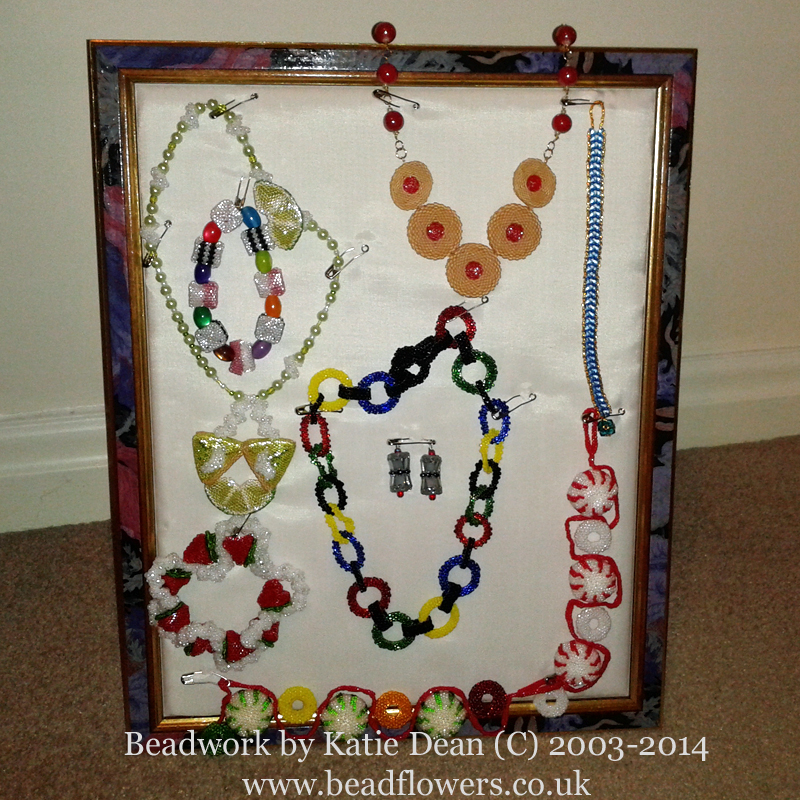How to price a beading pattern
Now, there’s a thorny topic: how to price a beading pattern… If you’ve ever purchased any patterns, you’ll know that the price you pay can vary from nothing to maybe $30. So, how would the designer have reached this price? Or, to put it another way…If you’re the beading designer, how do you decide what price to charge for a pattern/tutorial?
I’m going to say now, there is no ‘definitive’ answer. But I do have some helpful models you can use. So, I’m going to start by reminding you how traditional pricing models work. Then look at how to price a beading pattern using those ideas. And if you need extra help, follow this link to find out about my pricing App which automatically calculates the best price for you to use!
Traditional pricing models
If you know anything about business or pricing, then you’ll probably be familiar with the traditional pricing model.
Cost of materials + cost of labour + overheads = price
Now, overheads can be something you calculate, or it can be a slightly random figure that is designed to contribute to paying for administrative expenses. You will often see cost of materials + cost of labour giving you a wholesale price. Then double that to give you a profit margin to cover your overheads. I’ve dealt with this model in more depth in this blog. So, if you want more details, take a look at that.
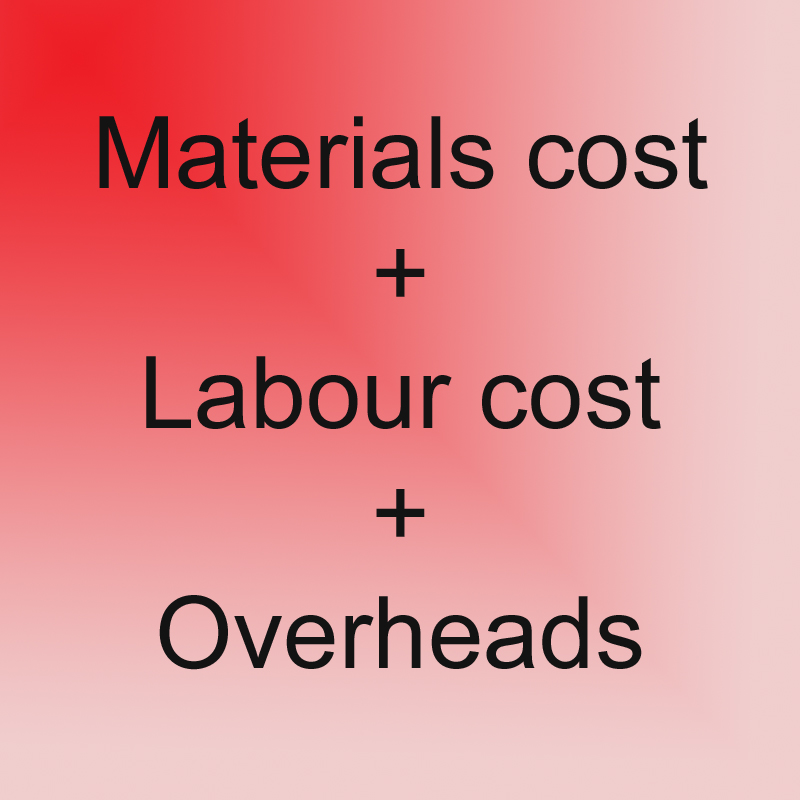
Applying this to beading patterns
If we’re looking at how to price a beading pattern, then how does that model apply?
Well, your cost of materials would be the cost of the beads, findings, thread, etc that you used for the design. So, remember, if your pattern meant you making multiple samples in different colours, you would need to factor in all those beads.
To determine your labour cost, you would first need to decide how much you deserve to be paid per hour. And yes, you do deserve to be paid. This is skilled work. If anyone could make up a beading design then everyone who beads would be doing it. So, I suggest the very lowest amount you pay yourself would be the minimum wage. In point of fact, your skill probably deserves a lot more than that.
Then, you need to note how many hours you spent creating the design. So, that’s all the time you were experimenting with the beads, stitching and ripping out. Then the time you spent making all of the samples you used in the pattern. Plus, the time you spent writing up the instructions.
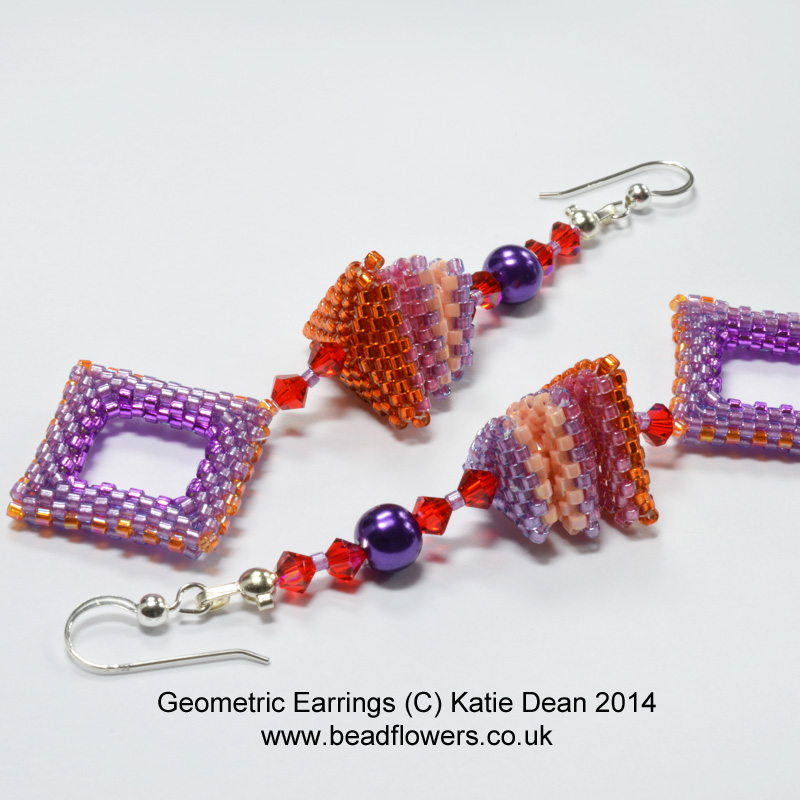 A relatively simple pattern for some beaded earrings, as I talk about below. You can find the pattern here>>
A relatively simple pattern for some beaded earrings, as I talk about below. You can find the pattern here>>
How does your pattern price look now?
So, let’s imagine you’re a really fast worker, highly experienced in design and pattern writing. You’re creating a project that uses a basic technique, so the pattern falls into place pretty quickly. It’s a seed bead only pattern for earrings, let’s say.
So, your materials cost probably isn’t too bad. Most likely under £10.
Designing was straightforward and you’re now experienced at writing up. But that’s still probably going to take you at least a day – more like two. So, two days’ wages. If we go for around minimum wage, let’s call that about £10 an hour. Two days’ work would be 16 hours. So, that’s £160.
Add the two together and you’ve got a price of £170.
Oops…who is going to pay £170 for a pattern to make some simple earrings? Probably nobody.
And what if your pattern was for a much more complex project? My Nativity set took weeks to design and make. The tutorial has over 50 pages. So, that’s text, photos and diagrams. That’s almost like writing a book! The cost of producing that was well over £1,000.
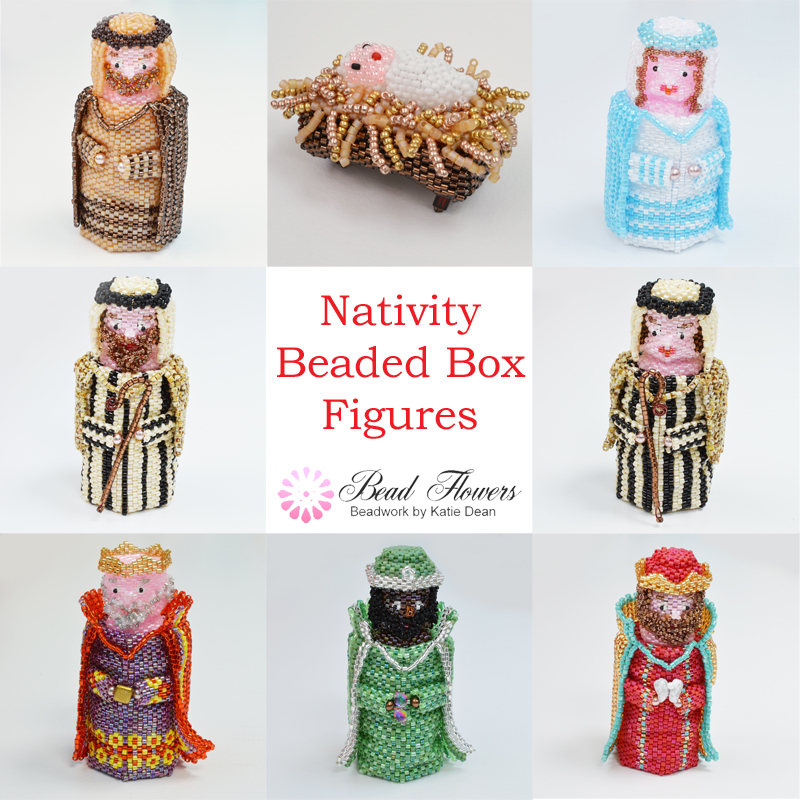
This beaded Nativity set took weeks to create!
How to price a beading pattern…sensibly!
So, hold onto that model. But let’s look at it in a different light.
The traditional pricing model usually works for a single item. So, you have a single cost of making that item, and you are charging a price to cover that cost.
With a beading pattern, you can sell the same item (the pattern) multiple times. So, think of your design costs as more like a ‘Research and Development’ cost. You’re not going to make that back through one sale. You’re aiming to recoup that cost over the lifetime of the product. So, if you expect your beading pattern to be available for ten years, then you have ten years to make enough sales to cover the cost.
Of course, you need to live in that time. So, you probably don’t want it to take you ten years to recoup your cost and start making some profit. You need that to happen sooner.
Perhaps the pattern lifetime isn’t the best way to think about it. Instead, try asking yourself how many copies of the pattern you think you can sell.
If you think you can sell ten copies of your earring tutorial, then you divide that £170 by 10. So, each pattern now has a price of £17.
Now, ask yourself: is that now a reasonable price for a beading pattern?
There isn’t a right or wrong answer to that. But you should look at the other patterns on the market. What do other designers charge for an earring pattern? Is your earring pattern more complex, comparable, or simpler than the competition?
Or, ask a different question altogether. What is the average beader prepared to pay for an earring pattern like yours?
Reality check…
Here’s a sobering fact for you. Fewer than 10% of the patterns I sell on my website have sold enough copies to cover the cost of producing them.
Yes, that’s right. Just because a pattern is available for sale, even if it’s a pretty design and the price is right, it doesn’t mean anyone is going to buy it.
So, when you’re looking enviously through the Etsy store, or website of another designer, mentally calculating how much they must be earning from all those patterns, stop. There is no guarantee that they are getting any – or many – sales. OK, perhaps you can calculate that from Etsy, since it tells you how many sales a shop has had!
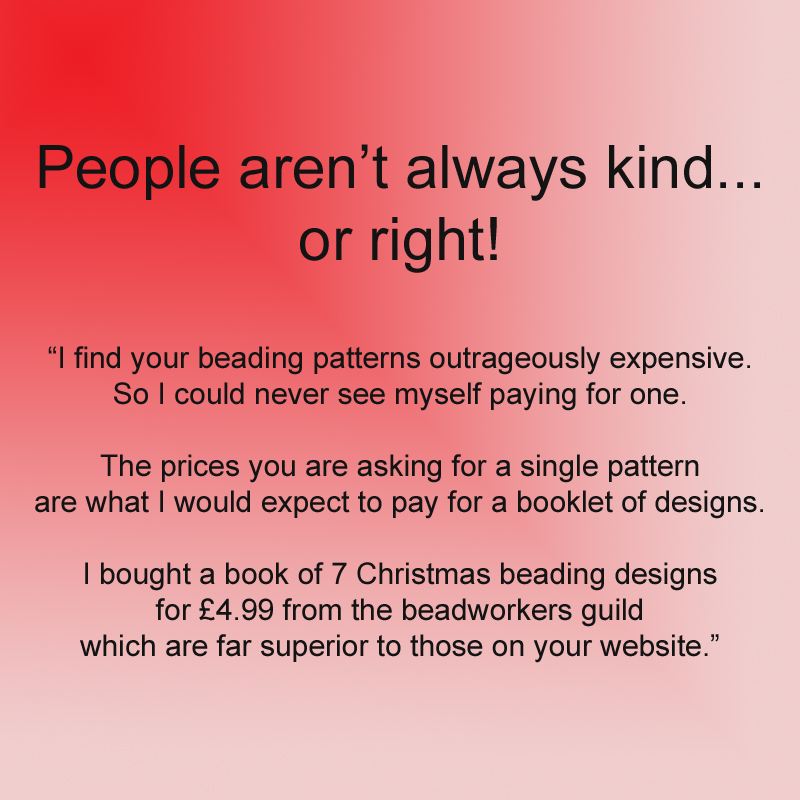
What others will say
You can spend hours, sleepless nights, questioning whether you are pricing your patterns too high or too low. If you’re not making back the cost of producing them, do you put your prices up? But, if you do that, will anyone still buy them? If nobody is buying them, is it because your price is too high? So, should you lower the price?
I don’t have answers to these questions. But I do know that, whatever price you charge, you will receive comments. Some people may write, in kindness, to tell you they think your pattern was great and you could be charging more for it.
You may also receive rude or nasty emails to tell you your prices are too high and there’s no way your work is worth that money. (These will probably come from people who haven’t made a purchase, so have no idea of the value of your pattern).
Everyone will have an opinion, but you are the only one who knows the true work that went into your pattern. So, stick to your guns, know your value and don’t be tempted to under-price because you feel like you ‘ought to’. It’s not easy to earn a living from selling beading patterns. I am constantly questioning whether it is worth it, or whether I should be looking at changing career. The jury is still out there…one day at a time.
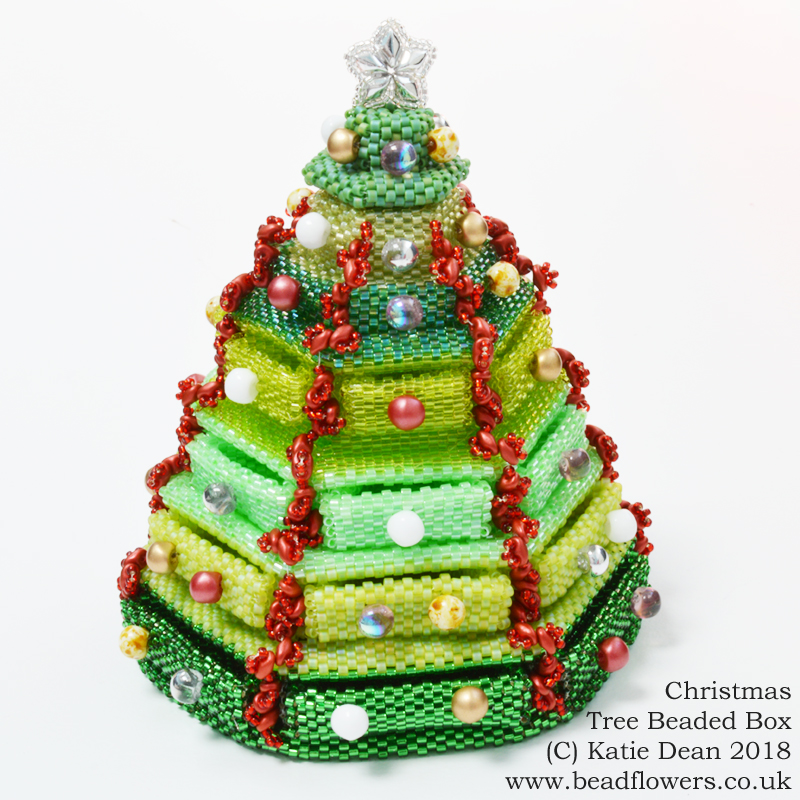
Summary: how to price a beading pattern correctly
So, let’s recap. When you’re looking at how to price a beading pattern, the first thing you need to know is what it cost you to make it.
- Cost of materials for all samples
- Time spent designing and making (hours x my wage)
- Time spent writing up (hours x my wage)
That gives you the basic cost.
Now, ask yourself the following questions:
- how many copies of the pattern can I sell?
- how quickly do I need to make back the cost?
Then, ask yourself if those goals are realistic. If they are, then you can divide the number of copies into the basic cost to get your initial price. If your goals aren’t realistic, then do you want to sell the pattern anyway and treat any income as ‘pocket money’? Or do you want to forget the whole idea?
Also, bear in mind, you probably sell many different patterns. So, if one isn’t making a profit, maybe another one is. Then that profit will cover other losses… Look at the big picture!
Finally, ask yourself these questions:
- how does my initial price compare to the competition?
- will customers pay this price?
If your initial price is higher, then can you justify it? If it’s lower, maybe you could raise it. You’re not going to know if people will pay the price you want to charge until you put the pattern up for sale. But that’s ok. You can always change the price at any time. Or try running a special offer to see if that boosts sales.

What next?
The issue of how to price a beading pattern is just one of the many questions you’ll deal with if you start selling your work. So, I hope this information has been helpful. If you need to know more about other aspects of running a beading business, check out this section on My World of Beads.
And, if you’re still struggling to know what price to charge, then check out my pricing App at this link. That does all the calculations for you!



